Venus, Our Colorful Moon, Earthshine,
Moon on SkyShed POD Dome
Posted: 26 May 2015
|
Open: Monday, 25 May 2015, 1814 MST Temperature: 91°F |
Session: 825 Conditions: Clear, breezes |
1821 MST: viewed Venus, 83X. Then Jupiter, 83X. Then the near First Quarter Moon, 83X. Began setting up for D7200 DSLR imaging. Mounted the DSLR at prime focus + 2X PowerMate.
Stack of 1836 frames (HD video, 60 fps, 30 seconds, 1.3X crop factor) using Keith's Image Stacker:
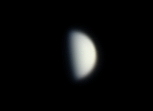
Venus had almost the same phase as the Moon this night.
1841 MST: removed the camera and mounted the William Optics Binoviewers. Viewed Venus, 100X. Next did some extended lunar observing with the Binoviewers, 100X. The sky was still bright well before sunset but there were some nice views. By 1910 MST, seeing was getting worse and there were now clouds in the southwest-to-western sky. 1924 MST: sunset.
1927 MST: mounted the D7200 DSLR at prime focus of the 8" LX200-ACF. This highly saturated photo shows the "colors" on the Moon:
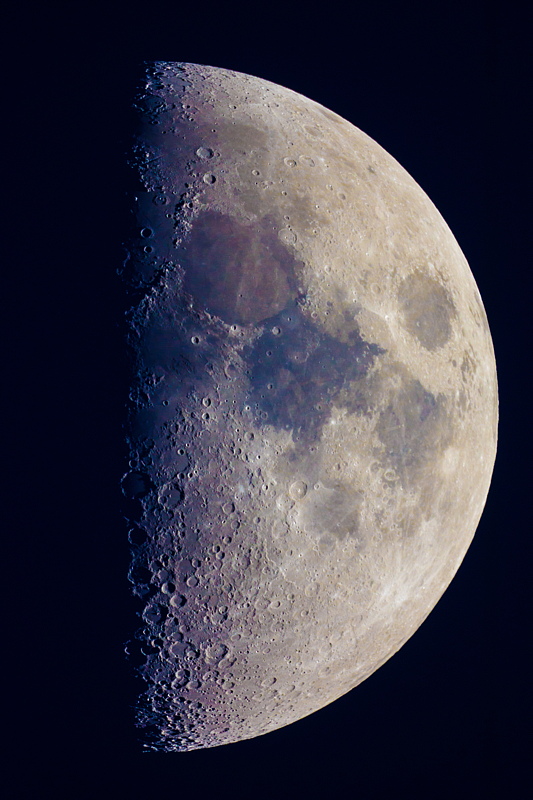
I then did a series of photos along the lunar terminator at prime focus + 2X PowerMate:
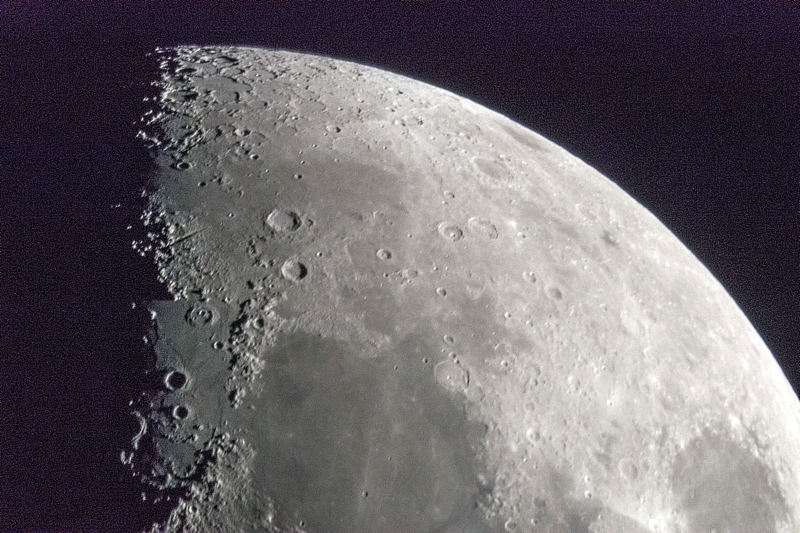
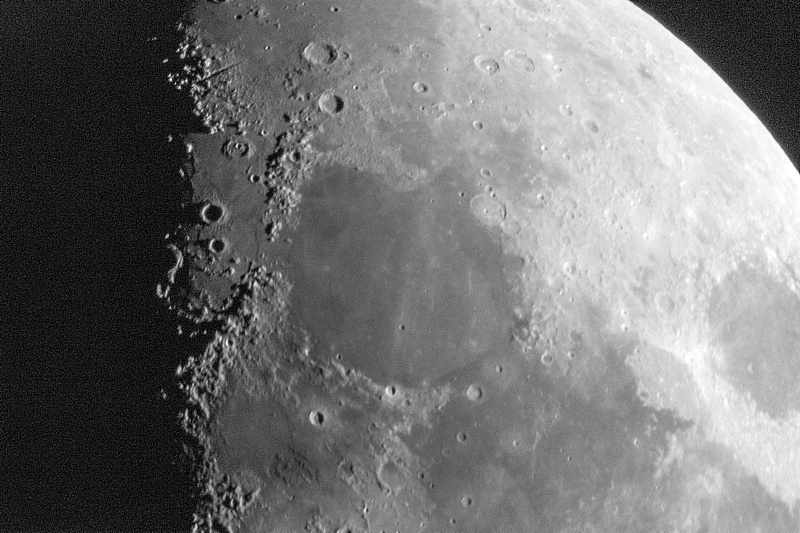
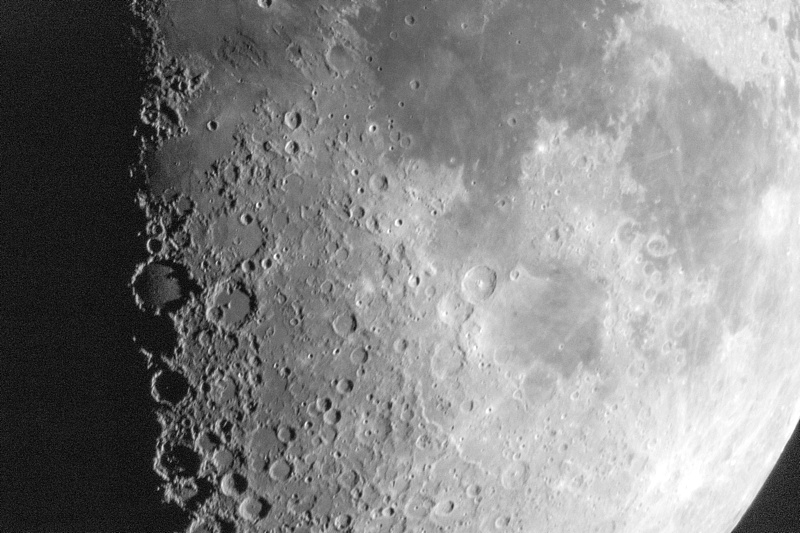
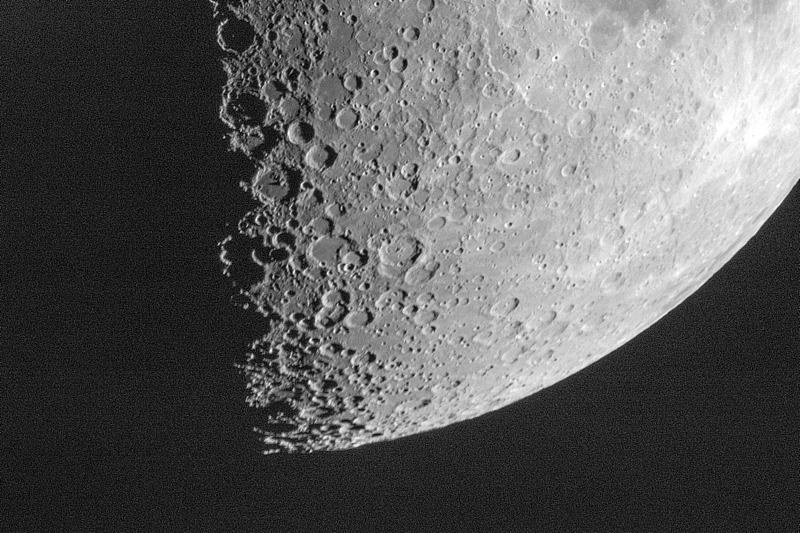
Some Earthshine was visible so I decided to photograph it. This is a prime focus, 1 second, ISO 800, exposure:
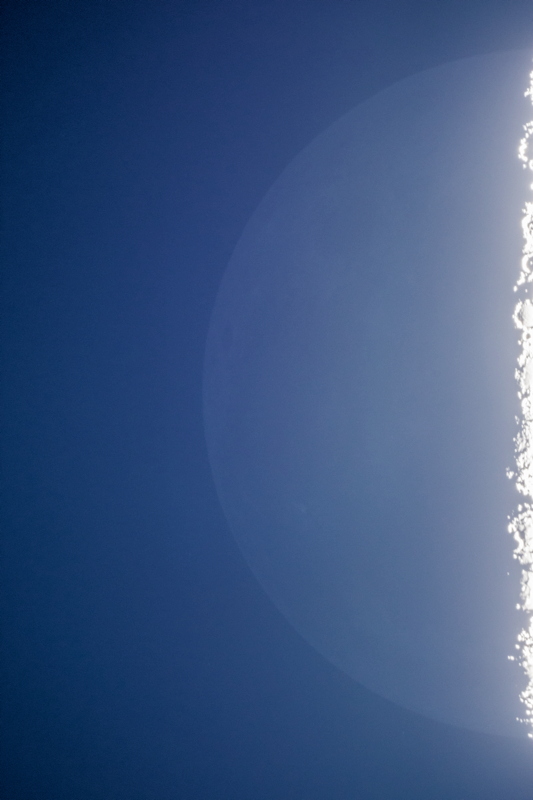
1951 MST: ended imaging and remounted the Binoviewers. Viewed Jupiter, 100X. The four Galilean Moons were visible. The South Equatorial Belt looked fainter this night and might be fading. Will have to monitor it over coming sessions.
I then returned to the Moon for some more observing using the Binoviewers, 100X. Clouds were increasing and seeing was not great. The view through the Binoviewers "looking down" on Montes Caucasus and Montes Apenninus mountain ranges showed a really nice "3D" effect using both eyes.
I noticed that the Moon, Jupiter, and Venus were nearly equally spaced in the sky, as seen in this iPhone 5s photo (telescope tube at the lower right and a portion of the observatory dome at the top right):
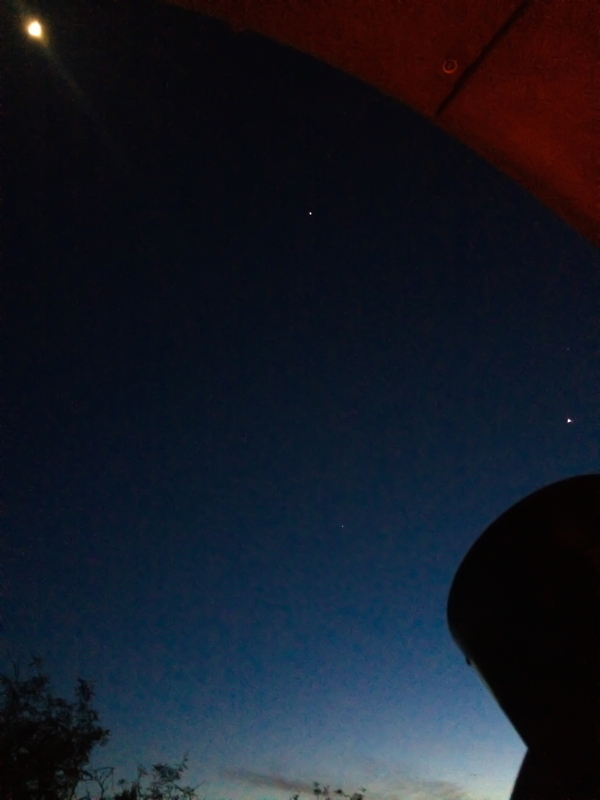
2009 MST: seeing worse now. Switched back to the 24mm eyepiece (83X). I then saw that the near First Quarter Moon was being projected onto the POD dome. I have previously photographed a near Full Moon and a Waxing Gibbous Moon on the dome, so decided to try for this one. I didn't have my photographic tripod with me this night so I handheld the D7200 DSLR for this f/3.5, 2 second, ISO 12800, photo:
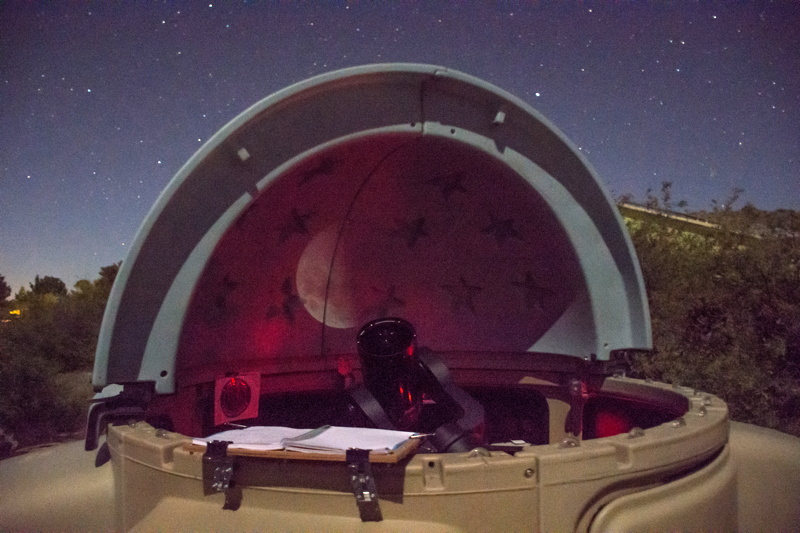
The Moon is projected on the dome near the center of the photo. Several stars are visible in the photo, including Vega just above the right side of the dome. The 8" telescope is visible inside the observatory, along with my POD Roller Desk on the POD wall.
Due to the increasing clouds and worsening seeing, began closing up for the night.
|
Close: Monday, 25 May 2015, 2057 MST Temperature: 66°F |
|
Comments are welcome using Email. If you are on Twitter you can use the button below to tweet this report to your followers. Thanks.
Cassiopeia Observatory Home Page
Copyright ©2015 Michael L. Weasner / mweasner@me.com
URL = http://www.weasner.com/co/Reports/2015/05/26/index.html
